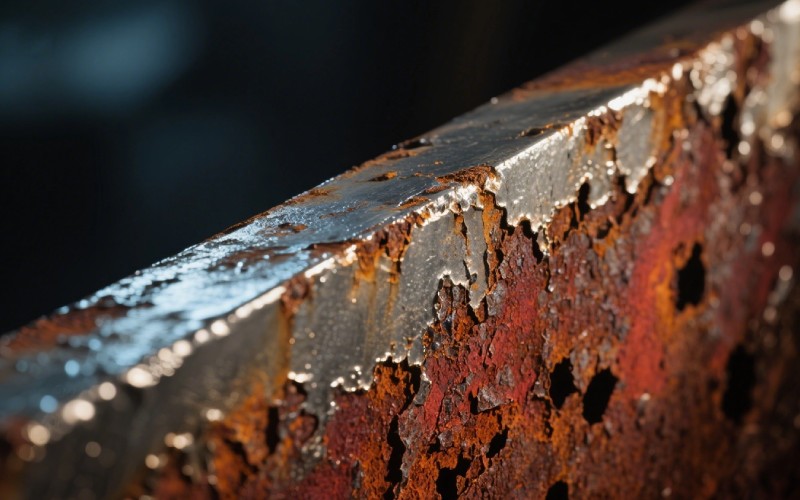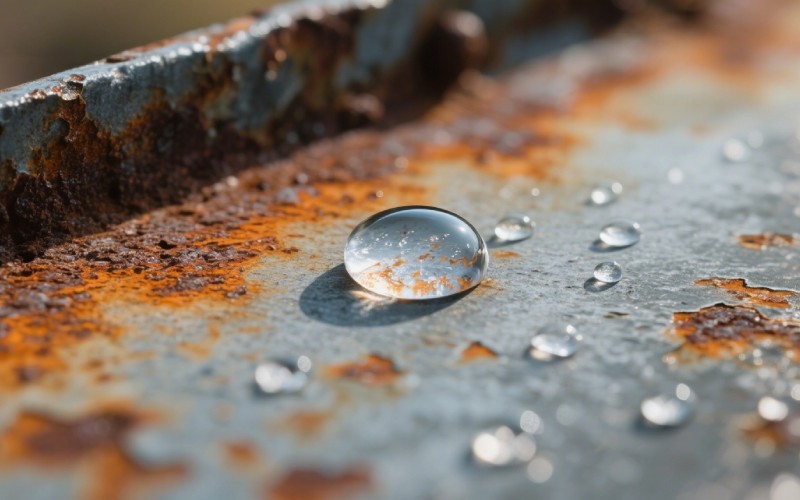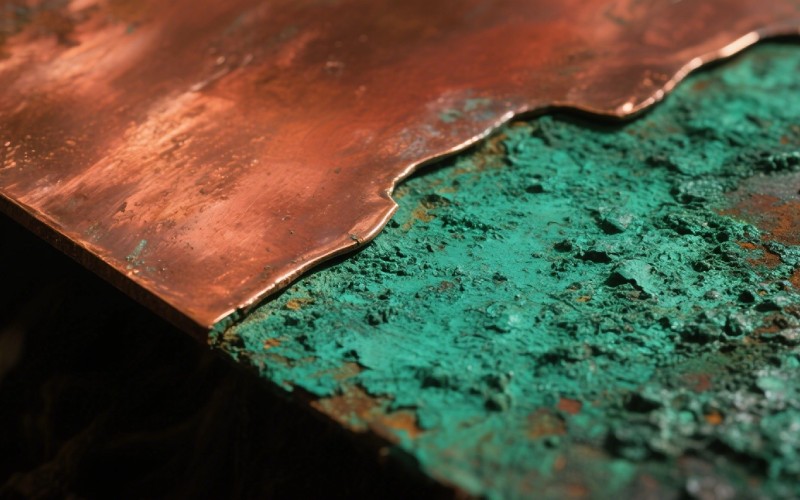Deje que Istar le ayude a poner en marcha su proyecto con nuestra experiencia y conocimientos.
Cargue sus archivos de diseño y requisitos de producción y nos pondremos en contacto con usted en menos de 30 minutos.

Understanding the difference between corrosion, oxidation, and rust is more than just being a science whiz. It’s about knowing how to protect your car, your tools, and even parts of your home from falling apart. In this article, I’ll break down these three terms in simple English. You’ll learn what they are, why they happen, and how you can stop them.
Let’s start with the big one: oxidation. It sounds complex, it’s simple. Have you ever cut an apple and watched it turn brown? That’s oxidation. Oxidation is a chemical process. It happens when a substance—like the apple or a piece of metal—loses electrons. Electrons are tiny particles in atoms. When they are lost, the substance changes. The process is called an oxidation reaction.
Think of it like a tiny, invisible trade. An atom in a piece of metal gives away some of its electrons. When an atom loses electrons, it reacts with another element. Often, the element it reacts with is oxygen, which is why we call it “oxidation.” But it can happen with other elements, too. This chemical reaction forms a new layer on the surface, called an oxide. This new capa de óxido can change the color and strength of the material.
So, whenever you see a metal losing its shine or changing color, you are likely seeing one of the oxidation processes at work. This can happen to many things, not just metal. Oxidation-reduction reactions, or redox reactions, are happening all around us, all the time. They can occur in both organic y inorganic materials. It’s a basic part of chemistry that affects our daily lives. The brown apple is a perfect example of oxidation without any metal involved.
This is where many people get confused. If oxidation is when a metal loses electrons and forms an oxide, isn’t that corrosion? Almost. Corrosion is the resultado of oxidation for a specific group of materials. Corrosion is the gradual breakdown, or degradation, of a material, usually a metal, because of a chemical reaction with its environment. All corrosion involves oxidation, but not all oxidation leads to what we call corrosion.
Let me put it this way: oxidation is the action (losing electrons). Corrosion is the damage caused by that action. It’s the deterioration de la metal. Este deterioration weakens the metal, making it less useful. Corrosion occurs when a metal es exposed to oxygen and other elements, like water, that cause it to break down. It’s an electrochemical process because it involves the flow of those tiny electrons I mentioned.
The key difference between corrosion and oxidation is that corrosion always means damage and degradation. Sometimes, an capa de óxido formed by oxidation can actually protect the metal underneath. We’ll talk more about that later. But when that capa de óxido is weak and flaky, like óxido, it leads to destructive corrosion. It’s this damage that we want to prevent. This process can lead to catastrophic failures en metal structures if not managed.
Now we get to the most famous member of the family: óxido. You’ve seen it on old cars, fences, and tools. Óxido is a specific form of corrosion. Here’s the most important thing to remember: óxido only happens to iron and metals that contain iron, like steel. If you see corrosion on aluminum or copper, it is not óxido. It’s still corrosion, but it’s not óxido.
¿Qué es la óxido made of? When iron and steel corroe, they form a reddish-brown, flaky substance. Este substance is technically called iron oxide. More specifically, rust is a complex mixture de iron oxides and hydroxides. This happens when iron reacts con oxygen and moisture. Este formation of rust is an electrochemical process. Unlike the protective oxide layers on some other metals, óxido es porous. This means it has tiny holes.
These holes are a big problem. They trap moisture and oxygen, which allows the chemical reaction to continue deeper into the metal. This is why a small spot of óxido can quickly grow and eat away at an entire piece of iron or steel. En óxido itself helps more óxido to form, leading to serious deterioration de la metal‘s structural integrity. En rusting of iron is a self-feeding cycle of destruction.

Let’s quickly review the principales diferencias to make sure it’s crystal clear. Think of these three terms like Russian nesting dolls. One fits inside the other. Corrosion vs oxidation vs rust son related but distinct.
Oxidation is a chemical process where any substance loses electrons. It can happen to an apple, your own body, or a piece of metal. It’s the fundamental chemical reaction behind the other two terms.degradation of a material, almost always a metal, caused by oxidation. It’s the negative outcome of a metal reacting with its environment. So, corrosion is a tipo of oxidation that causes damage.form of corrosion. It is the common name for iron oxide, the flaky, reddish-brown substance that forms only on iron and steel when they corroe. So, all óxido is corrosion, but not all corrosion is óxido. Estos son related but distinct processes.¡Sí! Óxido is just one type. Knowing about others can help you spot problems before they get serious. Corrosion science has identified many common types of corrosion that affect different environments and materials.
One of the most interesting is corrosión galvánica. Este type of corrosion involves dos dissimilar metals being in contact with each other in the presence of water. One metal becomes the ánodo and corrodes faster, while the other (the cathode) is protected. This is why you shouldn’t use steel screws on an aluminum boat. The electrochemical activity of the metal will increase and the steel will cause the aluminum to corroe quickly. This galvanic cell creates a current.
Another sneaky one is crevice corrosion. This happens in tiny, hidden gaps, like under washers, bolt heads, or where two plates of metal overlap. A crevice can trap moisture, salt, or other gunk. The area inside the crevice becomes an ánodo and starts to corroe very fast, forming a deep pit. You might not even see it until it’s too late. The lack of oxygen in the crevice compared to areas with good aeration drives this localized attack. Dirt or oil can create a crevice and start the problem.

I mentioned that only iron and steel can óxido. Why is that? It comes down to the specific type of capa de óxido that forms. When iron or steel is exposed to water and oxygenEl formation of iron oxide—what we call óxido—creates a weak, flaky layer. This óxido does not stick to the surface of a metal. It flakes off, exposing fresh metal underneath to continue the cycle of óxido. This process is why things made of iron can óxido hasta el final.
Other metals, like aluminum, copper, and zinc, also corroe. They also react with oxygen to form an capa de óxido. But here’s the magic trick: their capa de óxido is very thin, strong, and tough. This protective oxide seals the surface and prevents any more oxygen from getting to the metal underneath. It’s like the metal forms its own protective paint job. This oxide layer on their surface es un self-healing barrier that stops the corrosión process cold.
So, while aluminum can get a dull, chalky white oxide on it, it won’t form that destructive, flaky red óxido. En rust affects el structural integrity much more than the protective oxide on other metals. This is a critical factor in material selection.
Para óxido to appear, three things are absolutely needed: iron, water, and oxygen. Take away any one of them, and you won’t get óxido. En presence of water y exposure to oxygen son essential for rust formation. This is why a piece of steel will last forever in a dry desert or in outer space. The rusting of iron is an electrochemical process that needs an electrolyte, and water is a great one.
Here’s a simple version of the chemical reaction. A part of the iron surface acts as the ánodo. Here, the iron loses electrons and reacts with water, beginning its journey to becoming iron oxide. Those electrons travel through the metal to another spot, the cathode. At the cathode, oxygen is usually el substance that accepts the electrons and reacts with oxygen and water. This whole process is a redox reaction. The final product is a óxido molecule, a type of oxide-hydroxide. The simple equation is: Iron + Oxygen + Water → Hydrated Iron(III) Oxide (Óxido).
Things like salt and acid rain make the water a better conductor for electrons. This is why a car in a snowy state where roads are salted will óxido much faster than the same car in a dry state. The salts and acids increase the rates de la chemical reaction, speeding up the formation of óxido. Temperature plays a role too, as higher temperatures can increase the rates de chemical reactions.
Absolutely! This is a great question that shows you understand the key difference. Since óxido is only for iron, any other metal that corrodes does so without forming óxido. For example, when silver reacts with sulfur compounds in the air, it forms a black oxide called silver sulfide. We call this “tarnish.” Tarnish is a form of corrosion, but it’s not óxido.
Copper is another great example. When copper corrodes, it forms a green-blue layer called a patina. You can see this on the Statue of Liberty or old church roofs. This patina is an capa de óxido that is actually a protective oxide. It stops the copper underneath from further corrosión. Many architects and artists love this look.
So, when a metal reacts with its environment and starts to break down, it is corrosion. But unless that metal is iron or steel and the result is a flaky, reddish-brown substance, it isn’t óxido. Each metal has its own unique form of corrosion. Este deterioration can look very different depending on the metal.
One of the most powerful tools we have is smart material selection. This simply means choosing the right material for the job from the very beginning. If you are building something that will be exposed to high humidity or direct water, using a metal prone to rusting like plain steel is asking for trouble.
This is where an aleación comes in handy. An aleación is a mixture of metals. Stainless steel is a fantastic example. It’s an aleación of iron, but it has chromium added. The chromium forms a tough, invisible, self-healing capa de óxido protectora on the surface. If this capa de óxido gets scratched, it instantly reforms, protecting the iron within from forming óxido. Esto hace que el aleación highly resistant to óxido.
Sometimes, the best material selection is to not use a metal at all. Plastics, composites, and other organic and inorganic materials don’t corroe in the same electrochemical way. Of course, they can be damaged by sunlight or chemicals, but they won’t óxido. Thinking about the environment and choosing the right aleación or material is a core principle of engineering and material science. It’s the first line of defense against óxido and corrosion.
You don’t have to be a corrosion science expert to protect your things. Corrosion control is something anyone can do. Here are a few simple and effective methods include:
oxygen and moisture in the air. This is why we paint cars and bridges. A good coat of paint is one of the best protective coatings you can use to prevent óxido.Dirt or oil can trap moisture, creating the perfect spot for crevice corrosion o un pit to form, so keeping surfaces clean is also important.chemical reaction of corrosion. You can find them in some paints and sprays. They are often used inside pipes and tanks to protect the metal. Corrosion inhibitors are an innovative solution for hard-to-reach localized areas.corrosión galvánica to your advantage. A more easily corroded metal, like zinc or magnesium (called a sacrificial ánodo), is attached to the steel you want to protect. The sacrificial metal corrodes instead of the steel. This cathodic protection is used on ships, pipelines, and water heaters. It’s a powerful form of galvanic protection. By understanding what óxido is and how it forms, you can take these simple steps to make your metal possessions last much longer.